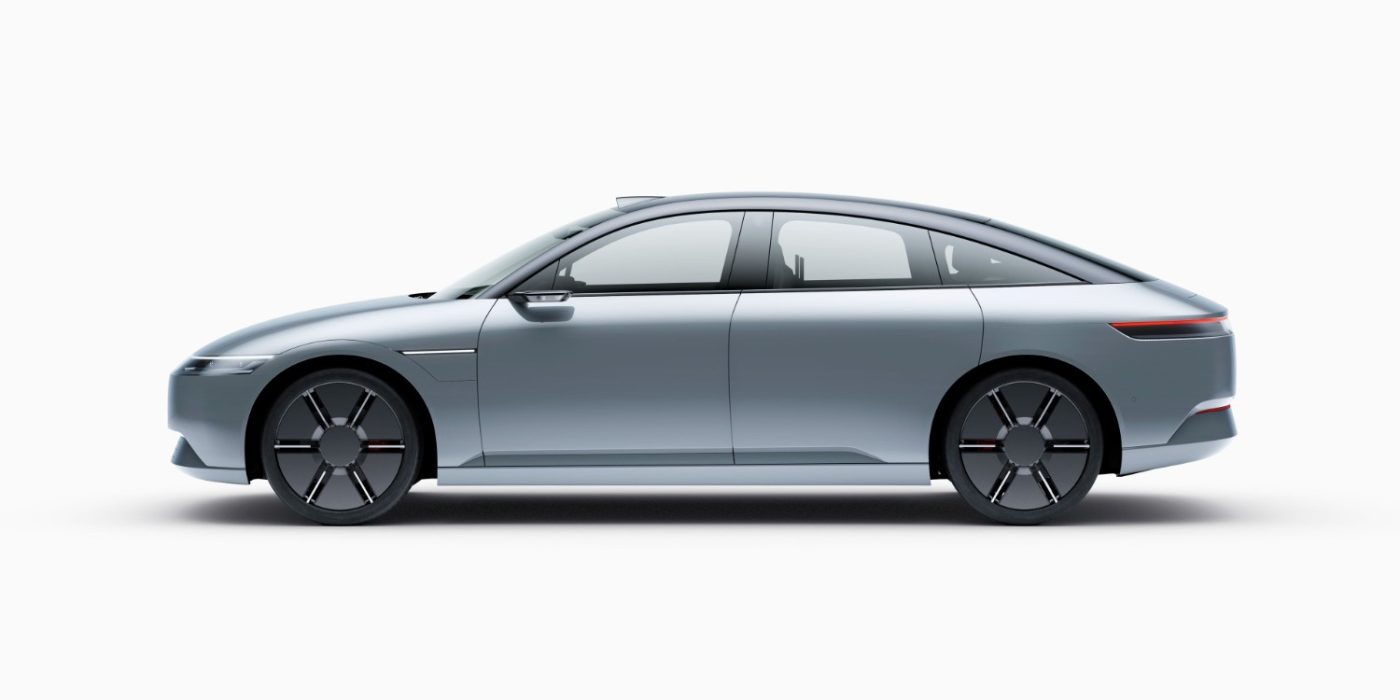Sony Honda Mobility presents prototype EV at CES
The Sony Honda Mobility (SHM) joint venture, which Sony and Honda founded last autumn, has come to the CES to put their shared EV brand Afeela in the spotlight. SHM also brought its first prototype electric car and announce a strategic partnership with Epic Games and Qualcomm.
On serious notes, the prototype previews Afeela’s first series model, expected to enter the pre-order stage in early 2025 and go on sale before the end of the same year, initially in North America. According to SHM, they will be able to deliver the new EVs from spring 2026.
Sony and Honda have not yet disclosed many technical details about the electric sedan. Only the dimensions of 4.9 x 1.9 x 1.46 m are known, with a wheelbase of three metres, and the vehicle will have all-wheel drive.
In his address to the gathered press in Las Vegas, Representative Director, Chairman, and CEO Yasuhide Mizuno also stressed Sony’s and Honda’s approach to merging “mobility space into entertainment space” – an idea that last received some fodder (in rumours) when reports emerged saying the new EV by SHM could integrate Sony’s Playstation 5. However, at the CES, Mizuno mentioned they were working with Epic Games to “create new value”.
For further partners, SHM says it relies on Qualcomm to deliver chips and other technology, such as the Snapdragon Digital Chassis. It will be used in features including AD/ADAS, HMI/IVI, and telematics.
“Our prototype is equipped with a total of 45 cameras and sensors inside and outside the vehicle, together with 800 TOPS of maximum computing power for ECU,” added the CEO. This data is in line with earlier announcements when SHM was already aiming to enable Level 3 autonomous driving on a highway and Level 2+ driver assistance in city driving.
It is also where Sony and Honda meet with Afeela “combining Sony’s sensor technology, Honda’s safety technology, and many intelligent technologies,” according to the website. In this way, the brand shall embody “an interactive relationship where people ‘FEEL’ mobility as an intelligent entity, and mobility ‘FEELs’ people and society using sensing and network IT technologies,” according to Mizuno.
The feel inside the car further suggests a playful approach. A double-wishbone is the steering wheel, much like a joystick, including button operation. The screen spans the width of the dashboard underneath the wind screen. As for the physical design, SHM says the interior was designed as “a soft cocoon-like space”.
So far, it has been Sony, though, who has taken the lead in the vehicle space. The electronics company presented the electric car prototype Vision-S 02 at the CES in Las Vegas in 2022, spiked with sensors for autonomous driving. Moreover, the SHM prototype now on display at CES 2023 bears similarities with previous Sony concepts, for example, in the roof line.
Both Sony prototypes were developed and built with the help of established automotive suppliers, such as Benteler, Bosch, Continental, ZF and the Canadian-Austrian contract manufacturer Magna Steyr. For Sony, the focus was already more on sensor and safety technology and the company’s complete entertainment system than on the EV platform.
Honda, however, has yet to charge into the EV space fully. The company sells one electric car, the Honda e, in small numbers (with a small electric van just being announced for 2014). The EV-dedicated Honda e: Architecture won’t hit the market until 2025. At least in time for SHM to launch the first model.
Sony and Honda established SHM last autumn after announcing the plans last summer. Based in Tokyo, Sony and Honda equally own SHM with an initial capital of 10 billion yen (about 70 million euros). Although SHM has headquarters in Japan, it will produce in the USA, where Honda is already ramping up battery production (with LGES) and electric car plants.
shm-afeela.com (CES statement), shm-afeela.com (prototype page)




